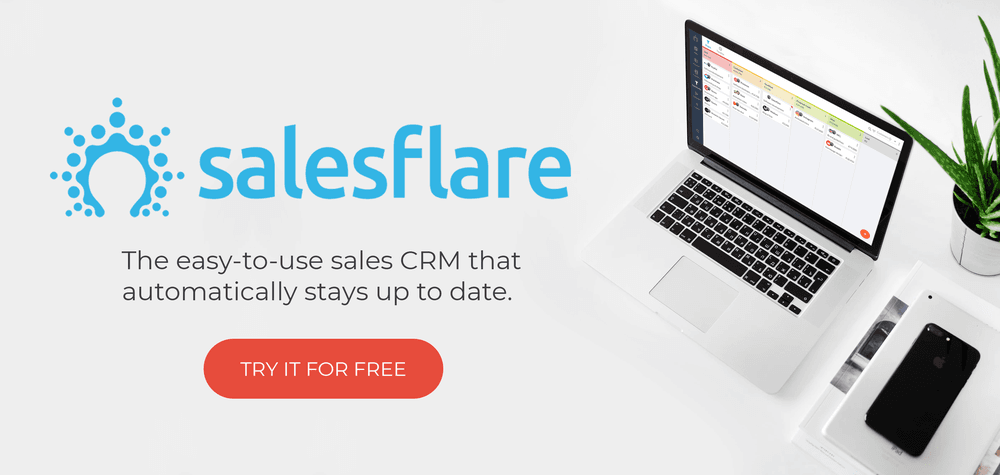Wie man die perfekte Startup-Website erstellt
Ein Gastblog von Ryan Gould (Vizepräsident für Strategie und Marketingdienste bei Elevation Marketing)

If you want to create the perfect startup website, first know why a website is important. Too often startups jump into building a website without a clear vision of why they’re doing it and what they want to accomplish. Your website is the sun around which all your other strategies rotate. And the end goal of those strategies is conversions. So, the perfect startup website should be designed and optimized with conversions in mind.
1. Entwurf
To accomplish its goal, your site must have good design, a good user experience with ease of use, consistency and good content. Did you know 38% of users will leave your website if they find it unattractive and 75% of users admit to making judgments about a company’s credibility based on their website’s design?
Ein paar Dinge sind zu beachten:
1. Halten Sie es einfach. Weniger ist mehr.
A Google study found websites with high visual complexity lead to more negative first impressions than websites of medium or low complexity – and users made those judgments in 17 milliseconds. You only have one to make a good first impression. Many agencies that offer webflow development services advise new website owners to always start small and simple because you can always do a redesign in the future.
2. Beschränken Sie sich auf einige wenige Schriftarten in verschiedenen Gewichtungen und Varianten.
Just because you have a whole bunch of fonts, doesn’t mean you should use them all. Each font conveys a feeling and you know what too many feelings can cause? Confusion. Re-read #1.

3. Seien Sie konsequent und sparsam mit Farbe
Wenn Sie sich entscheiden, eine persönliche Website zu erstellen, beginnen Sie mit Ihren Markenfarben und verwenden Sie diese als Grundfarbe, wählen Sie 1 oder 2 Akzentfarben, dann eine Hintergrundfarbe. Und denken Sie an Ihr Unternehmen. Wie Neil Patel sagt, verwenden Sie Farbe auf die richtige Weise, zur richtigen Zeit, für die richtige Zielgruppe und für den richtigen Zweck.
4. Stellen Sie sicher, dass die Website für Mobiltelefone optimiert ist
This can’t be stressed enough. More than half of global internet traffic now comes from mobile devices. Google ranks mobile-friendly sites higher in mobile search results and last year started using the mobile versions of web pages for indexing and ranking.
2. SEO
One thing you have control over from the start is your on-page (or on-site) search engine optimization (SEO). That’s what helps determine your rank on search engine results pages (SERP) – the higher on the SERP you are, the better.

Es gibt einige andere SEO-Taktiken, die Sie anwenden können, aber hier sind die On-Page SEO-Faktoren, die Sie sofort berücksichtigen müssen:
1. Titel-Tags
The title tag is what people see in search engines. It’s clickable and ideally it says what the page is about. Include one of your primary keywords in the title when possible (but don’t stuff keywords!) and keep it to 55-60 characters so it doesn’t get cut off in search results.
Why it’s important: Google looks at the title tag and compares it to the rest of the content to judge its relevance – and relevance is a factor for your rank in SERP.
2. Meta-Beschreibung
Dies ist eine weitere Möglichkeit zu zeigen, worum es auf einer Seite geht. Die Meta-Beschreibung wird in der SERP unterhalb des Titels und der URL angezeigt. Sie sollte etwa 160 Zeichen lang sein (längere Zeichen werden in den Suchergebnissen abgeschnitten) und natürlich ein oder zwei Schlüsselwörter enthalten.
Why it’s important: The meta description doesn’t factor in ranking, but it does improve click-through rate because it shows users a little more about the page content of your startup website. If people like what they see, they’ll click.
3. URL
Your URL helps identify the structure of your domain, but beyond that, it’s yet another place to use a keyword.
Why it’s important: The URL itself isn’t a major ranking factor, but when you include a keyword in a URL, it may help rank – it also helps identify what the page is about.
4. Alt-Text
Alt-Text wird für Bilder verwendet und ist im Code der Seite enthalten. Sein Hauptzweck ist die Beschreibung von Fotos für Menschen mit Sehbehinderungen, die Bildschirmlesegeräte verwenden.
Why it’s important: Die Aufnahme eines primären Schlüsselworts in die Bildbeschreibung kann den Suchmaschinen-Crawlern helfen, das Bild zu indexieren und die On-Page-SEO zu unterstützen.
And don’t forget:
- Your company name and contact information (you’d be surprised how many companies don’t include thorough contact information).
- Stellen Sie sicher, dass Ihre Seiten schnell laden (Sie können 7% Ihrer Konversionen verlieren bei einer Verzögerung von 1 Sekunde bei der Seitenladezeit).
3. Inhalt
Where “more content” was the old mantra, now it’s more about topics and the content you create around those topics. Keywords on their own aren’t quite as important as they used to be, but keywords used in relevant content that matches searchers’ queries are.
Technically this is still under on-page SEO, but it’s the content that’s really the important thing. Google wants users to find answers – the best answers – quickly. Better, relevant content accomplishes that, so any startup website built around fresh, consistent content will be rewarded.
Stellen Sie sich diese Fragen:
- Ist mein Inhalt reichhaltig? There’s no minimum number of words per page, but the more thorough the content, the better you’ll rank. A good rule of thumb is a minimum of 300 words on page. Longer content should be broken up with images, bullet points, H1- und H2-Überschriften und Anführungszeichen.
- Ist mein Inhalt für die Suchanfrage relevant? If someone searching for “spring dresses” lands on a page for winter formals, they are going to bounce right off the page – and likely your site and your life.
- Ist mein Inhalt benutzerfreundlich? Is it readable? If you’re not sure, try running it through a Lesbarkeitschecker). Ist die Rechtschreibung und Grammatik korrekt (das ist wichtig!)?
- Überschneide ich Inhalte auf mehreren Seiten? Suchmaschinen erkennen doppelte Inhalte und werden Sie bestrafen. Stellen Sie sicher, dass Sie eine Vielzahl von gut geschriebenen und optimierten Inhalten auf Ihrer Website haben.
Ein paar weitere Dinge, die Sie für Ihre Startup-Website beachten sollten:
Starten Sie einen Blog: Jeder Blogbeitrag ist eine weitere Seite der Suchmaschinenoptimierung! Einen Blog starten, write authoritative posts with relevant (there’s that word again) content and optimize it for search. The optimal blog length in part depends on your industry, your website, and your audience, but in general, blogs that are 1,600-1,900 words rank better. That doesn’t mean use 100 words where 10 will do just to fill space. Concentrate on the quality of the content rather than the length.

Schreiben Sie für Ihre Kunden: Don’t write stiff, formal content aimed at search engines. The search engines know better and so do your customers. Write naturally, as if you’re having a conversation because, really, you are.
Bitten Sie um Feedback: Kunden-Feedback ist ein oft übersehener Teil einer allgemeinen Marketingstrategie und Ihrer Marke. Durch die Ermöglichung Feedback zu Ihrer Websitekönnen Sie alles besser gestalten, von der Benutzerfreundlichkeit Ihrer Website über Ihr Angebot bis hin zur Kundenzufriedenheit. Um Ihren Website-Besuchern ein noch besseres Erlebnis zu bieten, sollten Sie sich auch auf Folgendes konzentrieren Website-Schutz und ansprechendes UI/UX-Design.
Fügen Sie Bilder und Videos ein: Webinhalte mit Bildern und Videos werden ausgeführt 94% besser als Inhalt ohne. The fact is, visuals make more of an impression in people’s minds and they are remembered better than text. And when it comes to SEO, just remember that alt text!
4. Zusammengefasst
Ein gutes Design, hochwertige Inhalte und SEO sind die drei wichtigsten Faktoren für die perfekte Startup-Website, die in den SERPs rangiert, Kunden anzieht und letztendlich zu Verkäufen führt. Der Grund, warum Sie ein Unternehmen haben, ist schließlich, dass Sie etwas zu verkaufen haben!
Ein wenig über Ryan:
Von alteingesessenen Fortune-100-Institutionen bis hin zu erfindungsreichen Start-ups bringt Ryan umfangreiche Erfahrungen mit einer Vielzahl von B2B-Kunden in Elevation Marketing ein. Er versteht es, integrierte Marketingprogramme zu entwerfen und zu managen und glaubt fest an eine Strategie, nicht nur an eine Taktik, die Vertriebs- und Marketingteams innerhalb von Unternehmen effektiv aufeinander abstimmt

Wir hoffen, dass Ihnen dieser Beitrag gefallen hat. Wenn ja, empfehlen Sie ihn weiter!
👉 Sie können @salesflare folgen auf Twitter, Facebook und LinkedIn.
if(window.strchfSettings === undefined) window.strchfSettings = {}; window.strchfSettings.stats = {url: “https://salesflare.storychief.io/startup-website?id=82341412&type=2”,title: “How to Create the Perfect Startup Website”,id: “b4bf56dd-9b24-4318-a472-b8522fe85e05”}; (function(d, s, id) { var js, sjs = d.getElementsByTagName(s)[0]; if (d.getElementById(id)) {window.strchf.update(); return;} js = d.createElement(s); js.id = id; js.src = “https://d37oebn0w9ir6a.cloudfront.net/scripts/v0/strchf.js”; js.async = true; sjs.parentNode.insertBefore(js, sjs); }(document, ‘script’, ‘storychief-jssdk’))- Fix It Fast - 3. April 2024
- Speichern Sie Ihre E-Mails - 21. Dezember 2023
- Jede Beziehung verfolgen - 1. Dezember 2023
